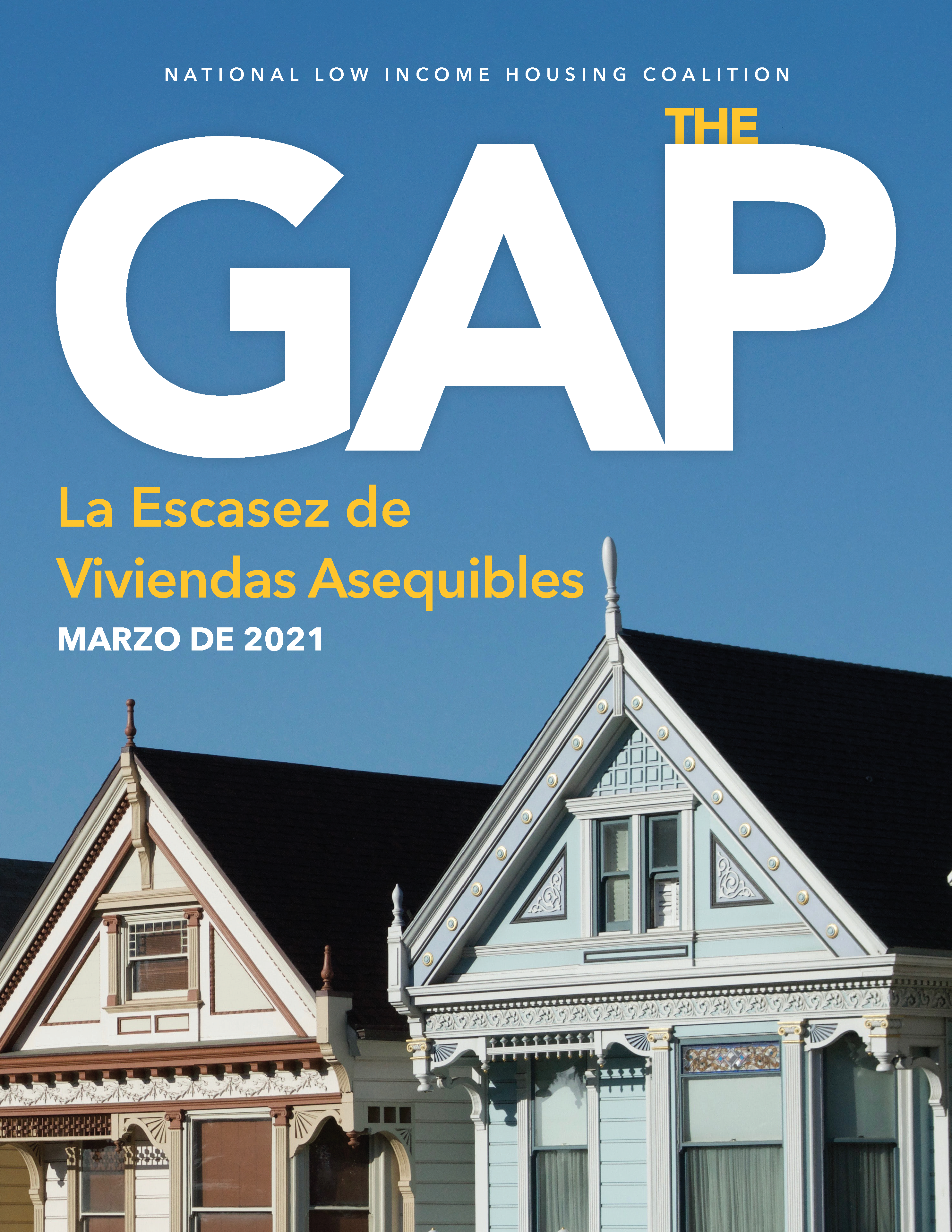NLIHC Releases Spanish-Language Edition of The Gap: A Shortage of Affordable Homes (La Escasez de Viviendas Asequibles)
Apr 26, 2021
NLIHC released the Spanish-language edition of its annual report, The Gap: A Shortage of Affordable Homes (La Escasez de Viviendas Asequibles), which finds that extremely low-income renters in the U.S. face a shortage of nearly 7 million affordable and available rental homes. Only 37 affordable and available homes existed for every 100 extremely low-income renter households in 2019. Even before the COVID-19 public health and economic crisis began, low-income households struggled to find decent, affordable homes. The report calls for policies that would ensure everyone has access to affordable, stable housing: significant and sustained investment in the National Housing Trust Fund, public housing, and the preservation of the affordable housing stock; expansion of housing assistance to all eligible households; a National Housing Stabilization Fund to prevent evictions and homelessness; and stronger renter protections to help families stay stably housed.

Each year, NLIHC examines American Community Survey (ACS) data to determine the availability of rental homes affordable to extremely low-income households (i.e., households with incomes at or below the poverty line or 30% of the area median income, whichever is greater) and other groups. This year, the analysis found that 10.8 million renter households with extremely low incomes account for 25% of all renter households and 9% of all U.S. households. Seventy percent of those extremely low-income renters—7.6 million households—are severely housing cost-burdened, meaning they spend more than half of their incomes on rent and utilities. No state has an adequate supply of affordable and available homes for extremely low-income renters, ranging from 20 affordable and available homes for every 100 extremely low-income renter households in Nevada to 61 in Mississippi and Wyoming. The report also explains why the shortage of affordable homes for households with higher incomes is driven by the shortage for the lowest-income renters who are forced to rent apartments they cannot afford, making those apartments unavailable to other income groups.
People of color are more likely than white people to be extremely low-income renters. Twenty percent of Black households, 18% of American Indian or Alaska Native households, 14% of Latino households, and 10% of Asian households are extremely low-income renters. By comparison, 6% of white non-Latino households are extremely low-income renters. Unsurprisingly, renters of color are much more likely to be housing cost-burdened. While 42% of white renters are cost-burdened, 52% of Latino renters and 54% of Black renters are cost-burdened. These patterns reflect the continuing impacts of historical and ongoing discrimination.
The report lays out both the short-term federal policies needed to respond to the pandemic and the longer-term policies needed to fix the long-term affordability crisis. In the short-term, a strengthened eviction moratorium that lasts until renters are again able to pay rents must be in place, and easily accessible emergency rental assistance is urgently needed. In the long-term, Congress must create and fund a permanent housing safety net, by investing in the production and preservation of the affordable housing stock, providing rental assistance to all renters who are eligible, creating a permanent housing stabilization fund to prevent evictions, and strengthening legal protections for renters.
Access the Spanish-language edition of the The Gap report at: https://bit.ly/3sMYIJX